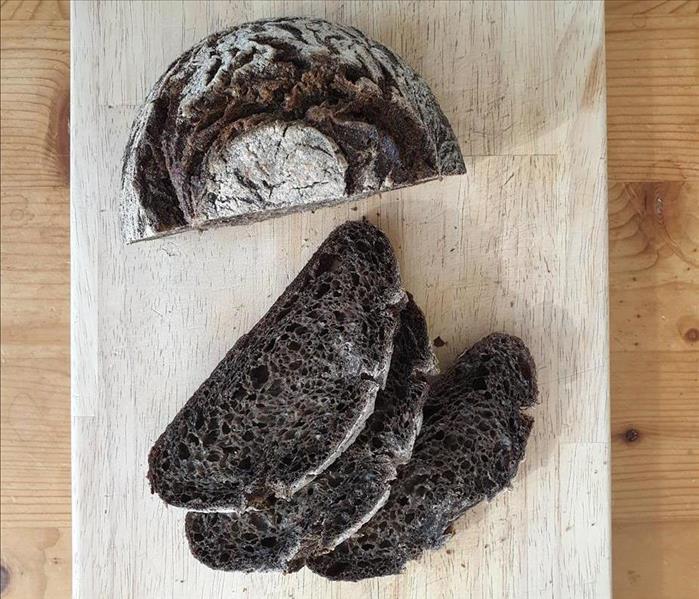How does Mold Grow On Bread?
11/30/2020 (Permalink)
Never eat clear signs of mold growth on bread
We thought we had seen it all regarding restoration damages until recently when SERVPRO of North Fulton got a call to perform a mold remediation job at a customer's house. At this specific job, the customer had left water damage go uncared for too long and resulted in mold growth. The customer did not have a problem with the mold until months later when the customer kept finding mold growth on new bread loaves. When there is a mold issue, it is common to hear about mold spreading throughout a home and contaminating many objects, but a call about moldy bread was a first.
What is Mold?
Many may think mold is an animal or a plant; however, both of these assumptions are untrue. Mold is a type of fungus and a living organism that produces tiny, microscopic spores and feeds on rotting food and other organic matter types. It spreads through these spores, which can drift through air or land via water and food.
Why Does Mold Grow On Bread?
Mold grows on bread because it needs food to survive. Bread contains rich organic materials, such as sugar and carbohydrates, that are necessary for its growth. The moisture in the bread also allows for mold growth as mold needs this water to survive. Bread is more susceptible to mold growth over other foods because it contains higher moisture content than other foods.
3 Common Types of Bread Mold
There are three common kinds of bread molds, Penicillium, Cladosporium, and aspergillus mold. The appearance of mold growth will Depend on the type of mold present in your home and on the bread. Common mold growth on bread will appear as a fuzzy blue or green patch on the bread's surface that can develop into black, splotchy centers. Another standard key indicator of bread mold is the smell. Moldy bread will usually smell rotten.
Penicillium bread mold
Penicillium bread mold is unique and is also used by people in certain foods, such as blue cheese. They often appear on bread in fuzzy white, grey, or light blue patches.
Cladosporium bread mold
Cladosporium bread mold is the most irritating to people with allergies. Cladosporium usually appears as a dark patch that can be either deep green or black. It is one of the most pungent molds and produces a noticeable odor.
Aspergillus bread mold
Aspergillus bread mold grows as fuzzy patches, and the color of these patches varies due to the different types of species of this mold. They usually appear in a yellow or light green patch.
Final Thoughts
Mold growth on bread is hard to avoid, especially when your home has clear indications of mold growth. House mold can grow in the HVAC unit, walls, and food left on the kitchen counter. If you notice mold growing in your home, it is best to hire a mold remediation company like SERVPRO of North Fulton. As a leader in the restoration industry, we have highly-trained professionals available 24/7. SERVPRO offers both commercial and residential restoration, specializing in mold damage restoration and water, fire, and storm damage restoration.





 24/7 Emergency Service
24/7 Emergency Service
